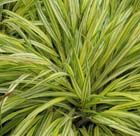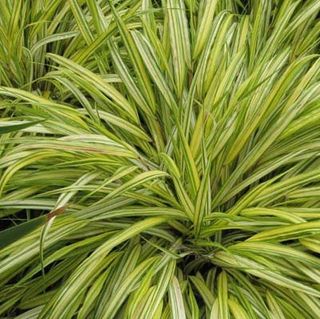The dirty dozen plants to avoid
Plantlife has put together a list of twelve invasive invasive to be avoided at all costs


Plant and conservation charities are celebrating a government ban on selling five species of invasive and non-native aquatic plants that are choking the life out of ponds and waterways. From this week, water fern, parrot's feather, floating pennywort-which can grow by up to 8in in a day water primrose and Australian swamp stonecrop or New Zealand pygmyweed will be prohibited from sale in England. Although the move was announced last year, retailers were given a year to adjust to the measure.
‘Tough laws to curb the sale of these plants could save the country millions of pounds, as well as protecting wildlife such as fish,' Richard Benyon, the then Environment Minister, said at the time. It was previously illegal to dispose of these plants in the wild, but, now, anyone selling them could face a maximum fine of £5,000 and up to six months in prison.
‘We support the ban,' says the RHS's chief scientist John David. ‘These five species have a very serious impact on river systems and ponds, where fish are often starved of oxygen because these plants form blankets over the top of the water.'
Plantlife, which has long campaigned for a ban, welcomes the move, but wants the Government to do more to reduce the estimated £1.7 billion it says is spent each year trying to control invasive non-native species and has compiled a ‘dirty dozen' (see box). ‘Invasive plants often follow well- trodden paths from garden centre to countryside,' says Trevor Dines, who leads the charity's Welsh branch. ‘People put them in their gardens, but then find them too aggressive and discard them, perhaps through fly-tipping, which gives them the launch pad they need.'
Dr Dines adds that other species, such as cotoneaster, have been scattered by birds: ‘It is the very existence of these species in our gardens and parks that is the biggest problem.' Plant life says most of its hitlist is identified as a risk in the Wildlife and Countryside Act 1981-which makes it an offence to plant, or otherwise cause these species to grow, in the wild-but that hasn't stopped them becoming established.
However, Dr David cautions that the RHS doesn't ‘fully agree with Plantlife's approach': ‘We understand their concerns, but we don't think it's a proportionate response to ban all these species from sale.'

Plantlife's dirty dozen
Sign up for the Country Life Newsletter
Exquisite houses, the beauty of Nature, and how to get the most from your life, straight to your inbox.
American skunk cabbage Grows to nearly 5ft, has creeping roots and unpleasant-smelling flowers Spanish bluebell Widely planted and able to cross with our native bluebell, this and its hybrids can now be found in woodland Chilean giant rhubarb With 6ft wide leaves on 5ft bristly stalks, it swiftly renders farmland useless Variegated yellow archangel This innocent-looking dead nettle can smother precious natives, such as spreading bellflower Three-cornered garlic Found along roadsides, hedgerows and woodland and field edges, where it pushes out primroses and violets Hottentot fig Its large flowers make it popular, but it forms impenetrable mats that carpet warm, sunny coastal cliffs Himalayan balsam Can grow to 8ft from seed in a single season and is an aggressive coloniser of river and canal banks Japanese knotweed Can dominate verges, waste ground, riverbanks, woodland, grass- land and coastal areas, and happily grows through concrete Pirri-pirri bur Short, creeping plant that's readily available from garden centres, but becomes especially invasive when it establishes on cool, damp cliffs and upland habitats Rhododendron Planted in Victorian times, it's swept across the UK and crowds out almost all other species Broad-leaved bamboo Easily obtained ‘ornamental' plant that can quickly produce a 6ft by 20ft patch of undergrowth Cotoneasters Only one of this group of shrubs favoured by gardeners is native to Britain-another 70 joined it in the wild after being bird-sown
* Follow Country Life on Twitter
Country Life is unlike any other magazine: the only glossy weekly on the newsstand and the only magazine that has been guest-edited by HRH The King not once, but twice. It is a celebration of modern rural life and all its diverse joys and pleasures — that was first published in Queen Victoria's Diamond Jubilee year. Our eclectic mixture of witty and informative content — from the most up-to-date property news and commentary and a coveted glimpse inside some of the UK's best houses and gardens, to gardening, the arts and interior design, written by experts in their field — still cannot be found in print or online, anywhere else.
-
 From California to Cornwall: How surfing became a cornerstone of Cornish culture
From California to Cornwall: How surfing became a cornerstone of Cornish cultureA new exhibition at Cornwall's National Maritime Museum celebrates a century of surf culture and reveals how the country became a global leader in surf innovation and conservation.
By Emma Lavelle Published
-
 18 magnificent homes for sale from £550k to £20 million, as seen in Country Life
18 magnificent homes for sale from £550k to £20 million, as seen in Country LifeFrom a charming thatched cottage to a 300-acre estate with its own vineyard, here's our pick of places to come to the market via Country Life of late.
By Toby Keel Published
